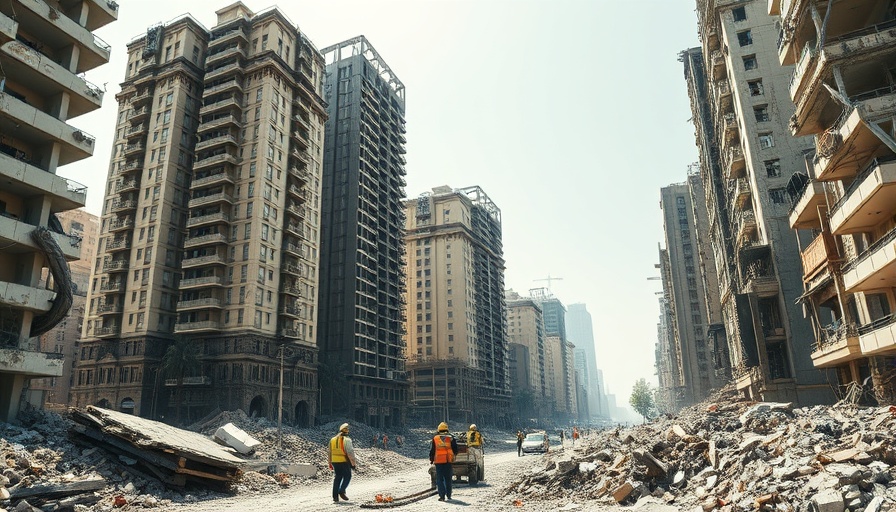
Understanding the Recent Escalation in Kyivan Attacks
On June 17, 2025, Kyiv experienced a devastating barrage of drones and missiles from Russian forces, marking the deadliest assault on the Ukrainian capital in nearly a year. This assault has resulted in at least 14 fatalities, including the loss of an American citizen, along with over 100 injuries inflicted upon civilians. The attack reflects a troubling increase in air assaults targeting Kyiv, paralleling rapid geopolitical tensions and raising alarms among international leaders.
A Historical Perspective on Conflict and Resilience
The current assaults evoke a grim historical context, reminiscent of previous conflicts that have plagued Ukraine since Russia's annexation of Crimea in 2014. The conflict has oscillated between brief periods of uncertainty and intense violence, with each cycle emphasizing the resilience of the Ukrainian spirit. As President Volodymyr Zelensky pointed out, these recent strikes undermine the slight hopes for peace that spurred diplomatic efforts across the globe.
Impact on Civilians: A Human Perspective
Each drone and missile that strikes Kyiv carries with it a human story—a family disrupted, lives tragically interrupted. The emotional toll on the average citizen is often ignored in the broader political narrative. National boundaries have become obscured by the shared grief of civilians caught in a conflict not of their making. Witness accounts from civilians in Kyivan neighborhoods highlight the anxiety, confusion, and perpetual state of alert underscoring daily life against such harsh realities.
The Global Response and Its Implications
The international community's response at events such as the recent Group of 7 summit in Canada remains pivotal. Despite Zelensky urging allies for further support and sanctions against Russia, skepticism looms concerning the collective resolve of world leaders, especially in light of statements from influential political figures like former President Trump, who continue to advocate for engagement with Russia. This political landscape draws attention to uncomfortable questions: What are the implications of perceived ambivalence from powerful nations amidst such serious human suffering?
Future Predictions: Navigating the Road Ahead
The trajectory of the conflict remains unpredictable, with each escalation representing a steepening curve in diplomatic relationships and military strategies. Analysts suggest that without definitive actions taken by the West, Putin’s regime may continue its aggressive posture, seeking to exploit perceived weakness and indecisiveness from the global community. The future not only relies on military might but also on strategic diplomacy, the frameworks being developed at such international summits, and the enduring spirit of the Ukrainian resistance.
Calls for Action: Reinforcing Unity and Support
Given the severity of the situation, there is a critical need for cohesive international unity to address not only the immediate needs of those suffering in Kyiv and across Ukraine but also to collectively respond to the broader implications of unchecked aggression in the region. Educating and mobilizing public opinion can be a powerful tool in influencing policymakers while reinforcing support for humanitarian efforts.
The Role of Media in Shaping Understanding
The responsibility of the media extends beyond mere reporting of events; it lies in untangling complex narratives into comprehensible stories. This endeavor fosters informed public discourse—leading to advocacy and change. Recognizing these individuals and appreciation of their sacrifice is essential, as they symbolize the broader humanitarian crisis posed by this ongoing conflict.
As developments continue in Ukraine, integrating awareness and understanding of this crisis within global dialogue becomes paramount. With every report and every story from the ground, the importance of informed action against aggression should resonate unequivocally.
 Add Row
Add Row  Add
Add 




 Add Row
Add Row  Add
Add 

Write A Comment